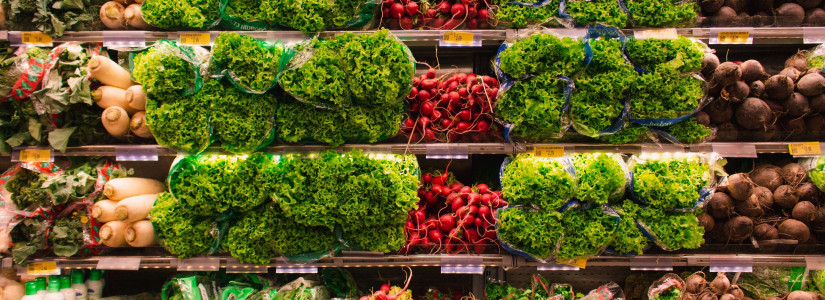SNAP Benefits and Employment Obligations in the United States After the Pandemic
The Supplemental Nutrition Assistance Program (SNAP), commonly referred to as food stamps, is vital for offering nutritional support to countless individuals and families facing hardship.
The United States Department of Agriculture (USDA) administers SNAP to assist low-income households. This benefit enables them to buy food staples and other essential items from participating merchants.
To effectively participate in SNAP, it's vital to grasp the eligibility criteria and obligations when receiving aid. Discover the critical information that eligible individuals, especially Able-Bodied Adults Without Dependents (ABAWDs), need to be aware of to sustain their benefits.
Guidelines for SNAP Eligibility and Work Requirements
Individuals aged 18-52 labeled as ABAWDs are considered capable of working and lack dependents. Under this designation, they are eligible for SNAP benefits for three months within a 36-month timeframe if they fail to meet the program's work requirements. To ensure continued benefits, they must participate in employment or qualifying work initiatives for at least 30 hours per week.
Non-compliance incurs consequences; the first infraction leads to a 3-month disqualification, the second warrants a 6-month suspension, and a third offense results in a year-long loss of benefits. Regular penalties promote and enforce the upkeep of a work routine.
Life is intricate, filled with nuances and exceptions. Understanding the range of individual circumstances, like location-based job options, disability status, and diverse state regulations, emphasizes the necessity for tailored advice. For those in search of clarity, it is recommended that they reach out to their nearby SNAP office or explore the official SNAP website for more information.
SNAP Policy Changes and Workforce Integration in the Post-Pandemic Era
SNAP's work requirements were paused in response to the pandemic's severe impacts. With the World Health Organization declaring the crisis over, it signals a return to the usual state. As noted by the Pew Research Center, this change in policy affects approximately 41.2 million SNAP participants.
Furthermore, SNAP policies are extending the maximum age for ABAWDs from 49 to 54 by the close of 2024. This adjustment highlights a fundamental societal expectation: as individuals near what is conventionally seen as a pre-senior stage, a collective responsibility exists to engage in the workforce.
The updated Food and Nutrition Service (FNS) regulations aim to reintegrate ABAWDs into the workforce while harmonizing social aid with individual accountability. Central to the program's ethos is the principle of empowering through employment and providing support through assistance.
During challenging times, Americans may question the stringency of regulations. However, the core objective is to ensure sustained assistance, foster self-reliance, and enhance our work ethic to facilitate the nation's recovery post-pandemic.
As we see our nation on the road to recovery, it's crucial to grasp and follow SNAP's work rules. For those tackling this challenge, remember you're not alone. Resources, help, and support are there to make meeting the requirements a path to resilience and independence.
-
Need more information about SNAP benefits and food stamps? Check out these articles:
The United States Department of Agriculture (USDA) administers SNAP to assist low-income households. This benefit enables them to buy food staples and other essential items from participating merchants.
To effectively participate in SNAP, it's vital to grasp the eligibility criteria and obligations when receiving aid. Discover the critical information that eligible individuals, especially Able-Bodied Adults Without Dependents (ABAWDs), need to be aware of to sustain their benefits.
Guidelines for SNAP Eligibility and Work Requirements
Individuals aged 18-52 labeled as ABAWDs are considered capable of working and lack dependents. Under this designation, they are eligible for SNAP benefits for three months within a 36-month timeframe if they fail to meet the program's work requirements. To ensure continued benefits, they must participate in employment or qualifying work initiatives for at least 30 hours per week.
Non-compliance incurs consequences; the first infraction leads to a 3-month disqualification, the second warrants a 6-month suspension, and a third offense results in a year-long loss of benefits. Regular penalties promote and enforce the upkeep of a work routine.
Life is intricate, filled with nuances and exceptions. Understanding the range of individual circumstances, like location-based job options, disability status, and diverse state regulations, emphasizes the necessity for tailored advice. For those in search of clarity, it is recommended that they reach out to their nearby SNAP office or explore the official SNAP website for more information.
SNAP Policy Changes and Workforce Integration in the Post-Pandemic Era
SNAP's work requirements were paused in response to the pandemic's severe impacts. With the World Health Organization declaring the crisis over, it signals a return to the usual state. As noted by the Pew Research Center, this change in policy affects approximately 41.2 million SNAP participants.
Furthermore, SNAP policies are extending the maximum age for ABAWDs from 49 to 54 by the close of 2024. This adjustment highlights a fundamental societal expectation: as individuals near what is conventionally seen as a pre-senior stage, a collective responsibility exists to engage in the workforce.
The updated Food and Nutrition Service (FNS) regulations aim to reintegrate ABAWDs into the workforce while harmonizing social aid with individual accountability. Central to the program's ethos is the principle of empowering through employment and providing support through assistance.
During challenging times, Americans may question the stringency of regulations. However, the core objective is to ensure sustained assistance, foster self-reliance, and enhance our work ethic to facilitate the nation's recovery post-pandemic.
As we see our nation on the road to recovery, it's crucial to grasp and follow SNAP's work rules. For those tackling this challenge, remember you're not alone. Resources, help, and support are there to make meeting the requirements a path to resilience and independence.
-
Need more information about SNAP benefits and food stamps? Check out these articles:

















